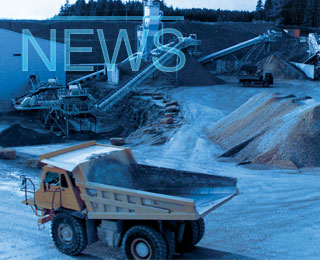Should investors be worried about the apparent slowdown of US cement shipments in recent months? The IMF has revised down its US growth estimates from 2.6 to 1.6 per cent for 2016 and construction is expected to see a deceleration.
A flow of company warnings have been issued with Buzzi Unicem Inc seeing volumes down by double digits in Texas and down 3-4 per cent in the Midwest. HeidelbergCement has also indicated that its August volumes have been below expectations in California and southern Texas.
Meanwhile, LafargeHolcim and Cemex USA have increased their cement prices by US$20/st.
July cement shipments
Total shipments of Portland and blended cement in the USA and Puerto Rico in July 2016 were about 8.1Mt, down nearly 13 per cent from sale sales in July 2015. The leading states in terms of production were Texas, California, Missouri, Florida - these states accounted for 41 per cent of the national output. Consumption was highest in Texas, California, Florida, Illinois and Pennsylvania, in descending order. These sales accounted for 37.5 per cent of shipments.
Poor weather
However, if July’s shipment figures were a little down the underlying trend is still positive. US cement sales from January to July 2016 totalled 51.9Mt, up by 3.7 per cent from the same period a year ago. Analysts Bernstein point out that there were three fewer shipping days in July this year, while bad weather in Texas hindered distribution. Some parts of Texas have seen rainfall at three or four times higher than average and the hurricane season is well underway with Matthew the latest system to have caused heavy destruction in Florida. Oil and gas investment has also slowed, which has a profound effect on oil well cement needs in Texas and North Dakota.
Regional variations
While there is high variation in cement demand between different states, North Dakota and Wyoming are the poorest fairing states with their cement volumes down over 30 and 20 per cent, respectively in 2016. Yet, South Carolina and North Carolina are up by some 28 and 23 per cent, respectively in terms of cement volumes YoY.
Residential and non-residential building
Residential and non-residential construction are both creating strong demand for cement in addition to increased infrastructure spending. Annual housing starts are below 1.5m but have shown an upward trend since the Global Financial Crash in 2009. On the other hand, housing permits have been down each month in 2016 when compared with last year, except in July 2016 when they matched July 2015.
The Federal Reserve has also stated that there is ‘potential overvaluation’ in the non-residential real estate market and that lending is starting to tighten. Yet, according to Bernstein data, commercial and industry borrowers are still growing at 10 per cent, which would indicate that there is some way to go yet before lending dries up.
Looking past the US presidential election
The US media is citing evidence that the US presidential election is having a negative effect on companies wanting to invest as they are cautious about the outcome. In a week that has seen Cemex's Victorville plant celebrate its centenary, it may be that US cement producers are best advised to look beyond 2016 to overcome their current uncertainties in a market that is fundamentally strong in the medium- to long term.

Sign up for our Daily News Service
Our editors' pick the top news delivered to your inbox each day.
Sign up for the daily email
